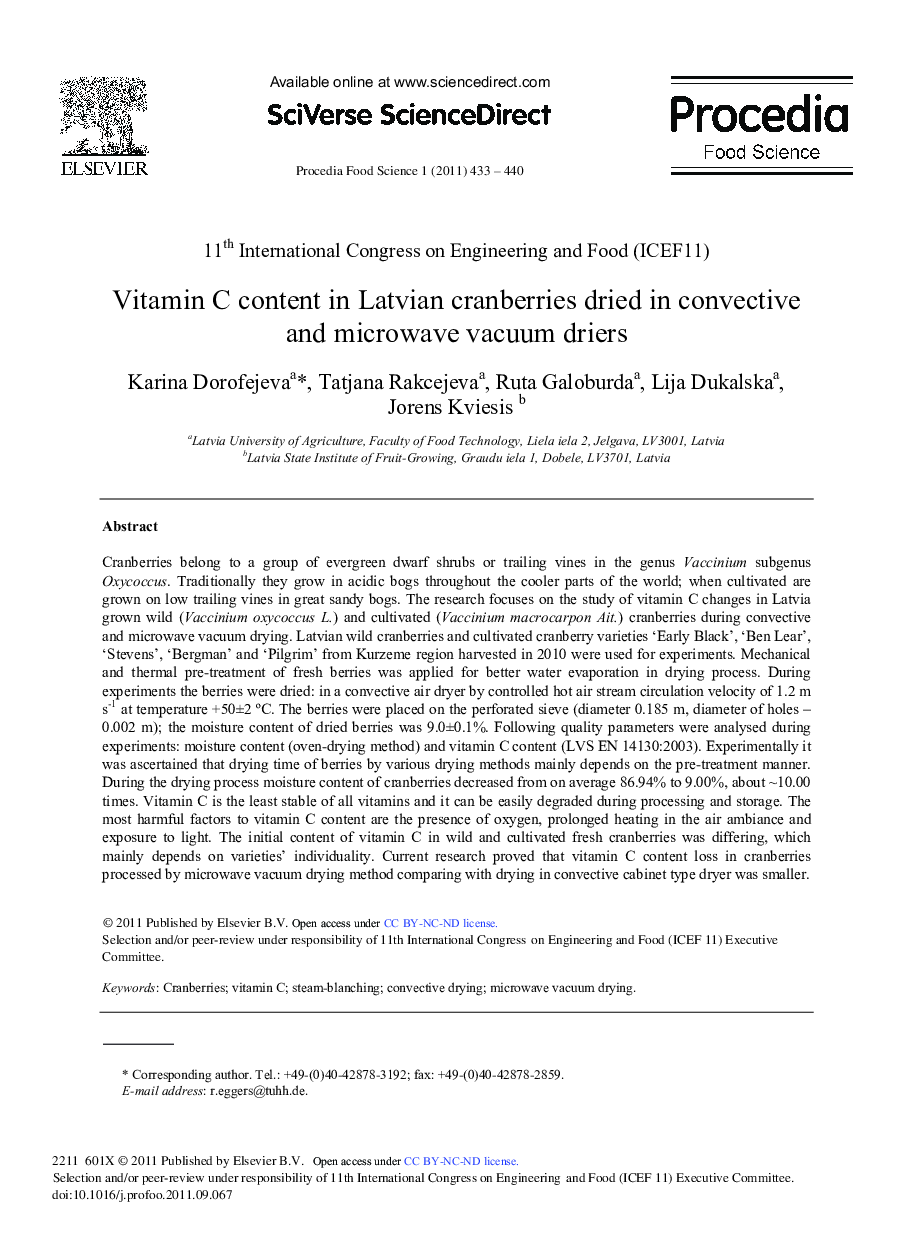| Article ID | Journal | Published Year | Pages | File Type |
|---|---|---|---|---|
| 1264975 | Procedia Food Science | 2011 | 8 Pages |
Cranberries belong to a group of evergreen dwarf shrubs or trailing vines in the genus Vaccinium subgenus Oxycoccus. Traditionally they grow in acidic bogs throughout the cooler parts of the world; when cultivated are grown on low trailing vines in great sandy bogs. The research focuses on the study of vitamin C changes in Latvia grown wild (Vaccinium oxycoccus L.) and cultivated (Vaccinium macrocarpon Ait.) cranberries during convective and microwave vacuum drying. Latvian wild cranberries and cultivated cranberry varieties ‘Early Black’, ‘Ben Lear’, ‘Stevens’, ‘Bergman’ and ‘Pilgrim’ from Kurzeme region harvested in 2010 were used for experiments. Mechanical and thermal pre-treatment of fresh berries was applied for better water evaporation in drying process. During experiments the berries were dried: in a convective air dryer by controlled hot air stream circulation velocity of 1.2 m s-1 at temperature +50±2 °C. The berries were placed on the perforated sieve (diameter 0.185 m, diameter of holes – 0.002 m); the moisture content of dried berries was 9.0±0.1%. Following quality parameters were analysed during experiments: moisture content (oven-drying method) and vitamin C content (LVS EN 14130:2003). Experimentally it was ascertained that drying time of berries by various drying methods mainly depends on the pre-treatment manner. During the drying process moisture content of cranberries decreased from on average 86.94% to 9.00%, about ∼10.00 times. Vitamin C is the least stable of all vitamins and it can be easily degraded during processing and storage. The most harmful factors to vitamin C content are the presence of oxygen, prolonged heating in the air ambiance and exposure to light. The initial content of vitamin C in wild and cultivated fresh cranberries was differing, which mainly depends on varieties’ individuality. Current research proved that vitamin C content loss in cranberries processed by microwave vacuum drying method comparing with drying in convective cabinet type dryer was smaller.
